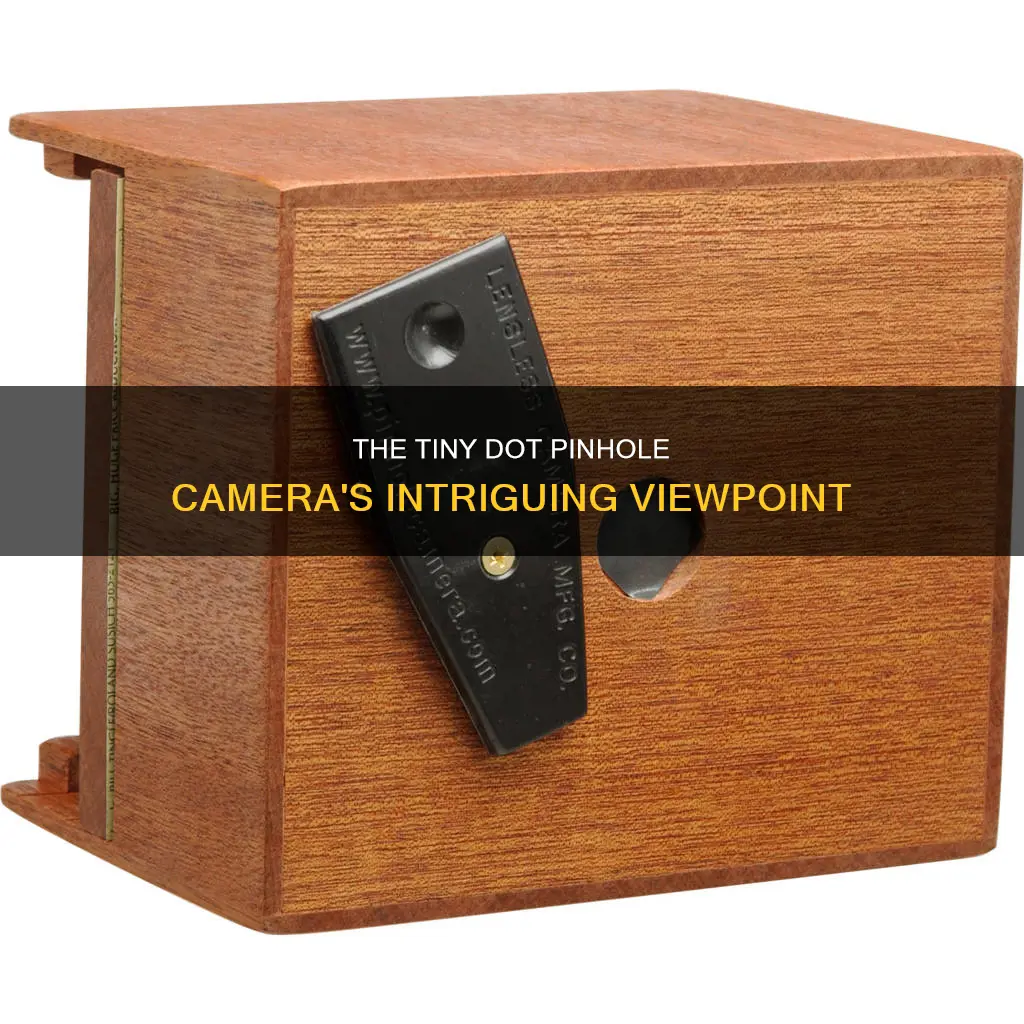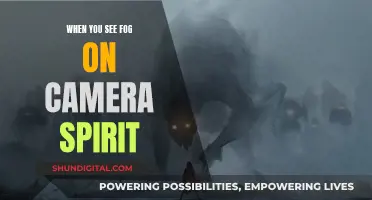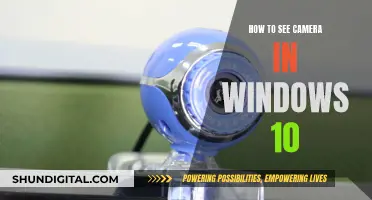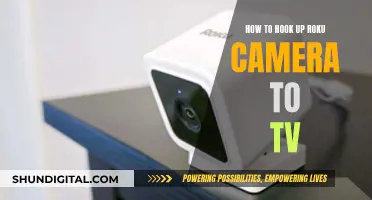
Pinhole cameras are simple devices that allow users to view images and take photographs without the need for a lens. The camera is essentially a light-proof box with a small hole (the pinhole) in one side, through which light enters and projects an image on the opposite side. This image can be viewed in real-time or captured on photographic film or paper. Pinhole cameras are often used for artistic purposes, as well as for educational projects and surveillance due to their simplicity and low cost. They can also be used to safely observe solar eclipses and track the movement of the sun in the sky, known as solarigraphy or solargraphy. The advantage of pinhole cameras is that they are easy to make and use, providing a basic form of photography that has been captivating artists, scientists, and curious minds for centuries.
| Characteristics | Values |
|---|---|
| Type of camera | A pinhole camera is a simple camera without a lens but with a tiny aperture |
| Other names | Camera obscura |
| Use cases | Used by photographers for artistic reasons, in solargraphy to observe the sun's movement, and in viewing eclipses |
| Image quality | The smaller the pinhole, the smaller and sharper the point of light that is created |
| Image projection | The farther away you hold the camera, the bigger the projected image will be |
| Light | The image is very dim because the pinhole is so small |
| Safety | Pinhole cameras are used to safely observe solar eclipses |
| Construction | A pinhole camera can be handmade by the photographer using a light-tight box with a pinhole in one end and a piece of film or photographic paper wedged or taped into the other end |
What You'll Learn

Pinhole cameras are used for solar eclipse viewing
The pinhole camera has a long history, with early descriptions found in Chinese Mozi writings (c.500 BCE) and the Aristotelian Problems (c.300 BCE – 600 CE). Over the centuries, people have experimented with the camera obscura, often in dark rooms with a small opening in shutters, to study light and to watch solar eclipses safely.
The image produced by a pinhole camera is inverted, and the smaller the pinhole, the sharper the image. The size of the image depends on the distance between the object and the pinhole. The pinhole camera is a simple way to view a solar eclipse, requiring only a few basic supplies to construct. One can, for example, use two pieces of card stock, with a small hole cut in the middle of one, covered with aluminium foil, and then a smaller hole poked in the foil. The second piece of card is placed on the ground, and the first piece with the pinhole is held above it, with the Sun behind you, to view the projected image on the card.
The pinhole camera is a useful tool for safely viewing solar eclipses, and with simple materials, one can construct a device to observe this impressive natural phenomenon.
Unifi Camera Remote Viewing: Easy Setup Guide
You may want to see also

They are the simplest camera possible
A pinhole camera is the simplest camera possible. It is a light-proof box with a small hole (the pinhole) in one side and some sort of film on the other. The pinhole can be made by making a tiny hole in a piece of thick aluminium foil with a pin.
Light enters the box through the pinhole, creating an upside-down image on the opposite side, allowing for basic photography without the need for a lens. The image is inverted and reversed, and the smaller the pinhole, the sharper the image. The pinhole forces every point of light in the scene to form a small point on the film, so the image is crisp.
The first known description of pinhole photography is found in the 1856 book 'The Stereoscope' by Scottish inventor David Brewster. Pinhole cameras are also called camera obscura, which is Latin for "dark room". They have been used by artists and scientists for centuries.
Big Brother Through Your Device's Camera?
You may want to see also

They are used for artistic reasons
Pinhole cameras are used for artistic reasons. They are the simplest camera possible, consisting of a light-proof box, some sort of film, and a pinhole. The pinhole is an extremely small hole that lets in light, creating an upside-down image on the opposite side, allowing for basic photography without the need for a lens. This technique has captivated artists, scientists, and curious minds for centuries.
Firstly, pinhole cameras are used for artistic reasons because they allow for a unique form of self-expression and creativity. Artists can experiment with different materials, tools, and art mediums to create intricate feelings and perspectives that find a tangible form. This bridges the gap between the creator's soul and the observer's gaze, allowing artists to manifest their inner intricacies and share them with an external audience.
Secondly, pinhole cameras can help artists develop their whole brain. The process of creating art with a pinhole camera strengthens focus and increases attention, develops hand-eye coordination, and requires practice and strategic thinking. It involves interacting with the material world in a unique way, as the pinhole forces every point emitting light to form a small point on the film, resulting in a crisp image.
Thirdly, pinhole cameras can be used to generate a love of learning and exploration. Artists who use pinhole cameras are often curious and passionate about discovering new techniques and pushing the boundaries of their craft. They embrace change, seek inspiration from diverse sources, and remain open to feedback, ensuring not only skill enhancement but also personal enrichment.
Lastly, pinhole cameras can help artists connect with others and build community. Art created with pinhole cameras can reach across racial stereotypes, religious barriers, and socio-economic levels and prejudices. It allows everyone to be more connected and less isolated, creating a sense of belonging and fostering empathy.
Syncing Mini Camera Footage to Your Tablet: A Guide
You may want to see also

They can be handmade
Pinhole cameras can be handmade by the photographer for a particular purpose. In its simplest form, a pinhole camera can consist of a light-tight box with a pinhole in one end and a piece of film or photographic paper wedged or taped into the other end. A flap of cardboard with a tape hinge can be used as a shutter.
The pinhole may be punched or drilled using a sewing needle or small-diameter bit through a piece of tinfoil or thin aluminium or brass sheet. This piece is then taped to the inside of the light-tight box behind a hole cut through the box. A cylindrical container with one end completely open and the other closed, with a hole drilled in it, can be made into a pinhole camera.
The interior of an effective pinhole camera is black to avoid any reflection of the entering light onto the photographic material or viewing screen.
Pinhole cameras can be constructed with a sliding film holder or back so the distance between the film and the pinhole can be adjusted. This allows the angle of view of the camera to be changed and also the effective f-stop ratio of the camera. Moving the film closer to the pinhole will result in a wide-angle field of view and shorter exposure time. Moving the film farther away from the pinhole will result in a telephoto or narrow-angle view and longer exposure time.
Pinhole cameras can also be constructed by replacing the lens assembly in a conventional camera with a pinhole. In particular, compact 35 mm cameras whose lens and focusing assembly have been damaged can be reused as pinhole cameras—maintaining the use of the shutter and film winding mechanisms. As a result of the enormous increase in f-number, while maintaining the same exposure time, one must use a fast film in direct sunshine.
Apple Watch: Camera Symbol Explained
You may want to see also

They can be used for surveillance
Pinhole cameras are used for surveillance because they are difficult to detect. They are small, simple cameras that can be handmade by photographers for a particular purpose.
A pinhole camera consists of a light-proof box, some sort of film, and a pinhole. The pinhole is a tiny aperture, like a small hole made with the tip of a pin in a piece of thick aluminium foil. Light enters through the pinhole, creating an upside-down image on the opposite side, allowing for basic photography without the need for a lens. The size of the image depends on the distance between the object and the pinhole.
Pinhole cameras can be constructed with a sliding film holder or back so the distance between the film and the pinhole can be adjusted. This allows the angle of view of the camera to be changed, as well as the effective f-stop ratio. Moving the film closer to the pinhole will result in a wide-angle field of view and shorter exposure time. Moving the film farther away from the pinhole will result in a telephoto or narrow-angle view and longer exposure time.
The interior of an effective pinhole camera is black to avoid any reflection of the entering light onto the photographic material or viewing screen.
Accessing Tesla's Cameras: A Step-by-Step Guide
You may want to see also







